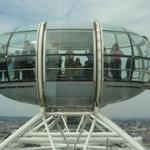@off-peak:
Hier eine Aufstellung von Expertenmeinungen zum Eintrittsloch, mit Hervorhebungen von mir.
Das Clark Panel hat 1967 die Eintrittswunde zuerst nach oben verlegt. Das HSCA hat auch eine höhere Position postuliert, aber leicht anders als das Clak Panel.
Interessant ist: Das Clark Panel arbeitete mit Röntgenbildern mit nicht so guter Qualität- jedoch wollten seine Experten eindeutig ein Eintrittslochweiter oben im Schädel erkannt haben. Als die Experten des HSCA und andere mit Röntgenbildern besserer Qualität arbeiteten, war das Eintrittsloch nicht mehr so eindeutig, es wurde mehrheitlich nicht eindeutig beim Namne genannt und vorsichtig von Frakturen oderä hnlichem gesprochen.
Dass das Clark Panel zu solch voreiligen Schlüssen hinsichtlich der Eintrittswunde kam lässt sich durch den politischen Hintergrund erklären.
http://www.ctka.net/pr1195-clark.htmlHier nun die Expertenmeinungen:
Dr. Russell Morgan of the Clark Panel (February, 1968, using the un-enhanced x-rays): claims 8 mm hole on outer table, 20 mm on inner table. 10 cm above the EOP, directly above the depressed fracture (which means it’s in a section of parietal bone that presumably fell to the table when the doctors peeled back the scalp and NOT in the occipital bone near the hairline where the doctors saw a beveled entrance). Large fragment is embedded in outer table of skull close to the lower edge of the hole (implying it’s in the depressed bone). Small fragments of bone lie within the hole.
Dr. Fred Hodges (April, 1975, un-enhanced): says that, although the bullet hole itself is not readily detected, many linear fracture lines converge on the site of the small round hole in the right occipital bone described in the autopsy report. Notes one large metallic fragment flattened against the outer table of the occiput. (By supporting the autopsy report, his interpretation is in conflict with the interpretation of the Clark Panel.)
Dr, Lawrence Angel (October, 1977, un-enhanced): sees entrance 1.8 cm to right of midline, just below obelion, the mid-point of the Lambda suture.
This means it’s on the occipital bone where Humes originally placed it, and not the parietal, where the Clark Panel moved it. Since Dr. Davis measured the Lambda as 6 cm above the EOP, this is indicative that Angel placed the entrance 4 cm (more than 1 ½ inches) below the Clark Panel’s entrance. Angel also says radiopaque lump (the large fragment) is behind obelion and appears to mark entry.
Dr. Norman Chase (February, 1978, un-enhanced): sees an entry point on upper rear head. Sees metal fragment at back of head.
Dr. William Seaman (February, 1978, un-enhanced): sees possible defect in upper rear skull. Sees no beveling denoting an entrance.
Dr. G.M. McDonnel (August, 1978, enhanced): doesn’t mention a hole, sees depressed fracture with radiating fractures 10.6 cm above the EOP, and a large metallic fragment 1 cm below it on the outer table of the skull, above the mid-portion of the EOP.
Dr. David O. Davis, (August 1978, enhanced): doesn’t mention a hole, says the large fragment is 9-10 cm above the EOP on the outer table of the skull and is 2.5 cm to right of midline. Says radiating fractures "seem to more or less emanate from" the fragment, but later says central point of fractures is 3 cm from midline, which means the bullet fragment ended up to the left of the entrance.
HSCA Forensic Pathology Panel: does not note an entrance location, but notes a depressed fracture as “sharp disruption of the normal smooth contour of the skull 10 cm above the EOP” (which places it higher than in the Clark Panel Report, whose measurement of 10 cm was the distance to the 8 mm hole above the depressed fracture). Mentions “suggested beveling” of the inner table and radiating fracture lines. Says large fragment is 2.5 cm to the right of the midline at the lower margin of the defect, which means bullet fragment ended up to the right and below the entrance (assuming they shared the trajectory analysis’s belief the entrance was 1.8 cm from mid-line.)
HSCA Trajectory Analysis: determined entrance was 1.8 cm to the right of midline and 9 cm above the EOP. This places the entrance 1 cm below the depressed fracture observed by the medical panel,
and on intact bone. This contradicts the Clark Panel's conclusion.The interpretations detailed above raise a lot of questions.
First of all, how could the Clark Panel, using un-enhanced x-rays, “see” so much more than everybody else? Particularly when the panel's radiologist, Dr. Morgan, later complained that these x-rays were of "poor quality" and "severely over-exposed"?
The likely answer, of course, is that they didn't actually see these things, and only said they did because it helped them shut down the "junk" in Josiah Thompson's book, and build support for their argument that the actual entrance on the back of the skull was four inches higher than determined at autopsy.
But what about the other radiologists? Shouldn’t an oval-shaped bullet entrance high on the back of someone’s head be readily identifiable to experienced radiologists and doctors using computer-enhanced x-rays?
Why is there no consensus on what is shown in the x-rays?http://educationforum.ipbhost.com/index.php?showtopic=13342&p=153155

























